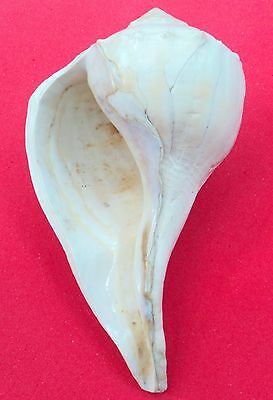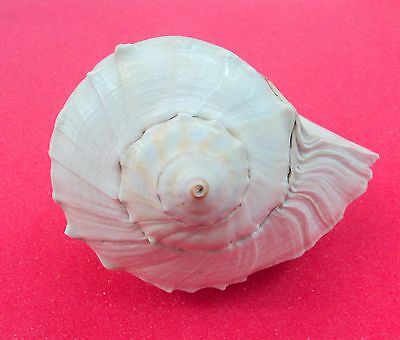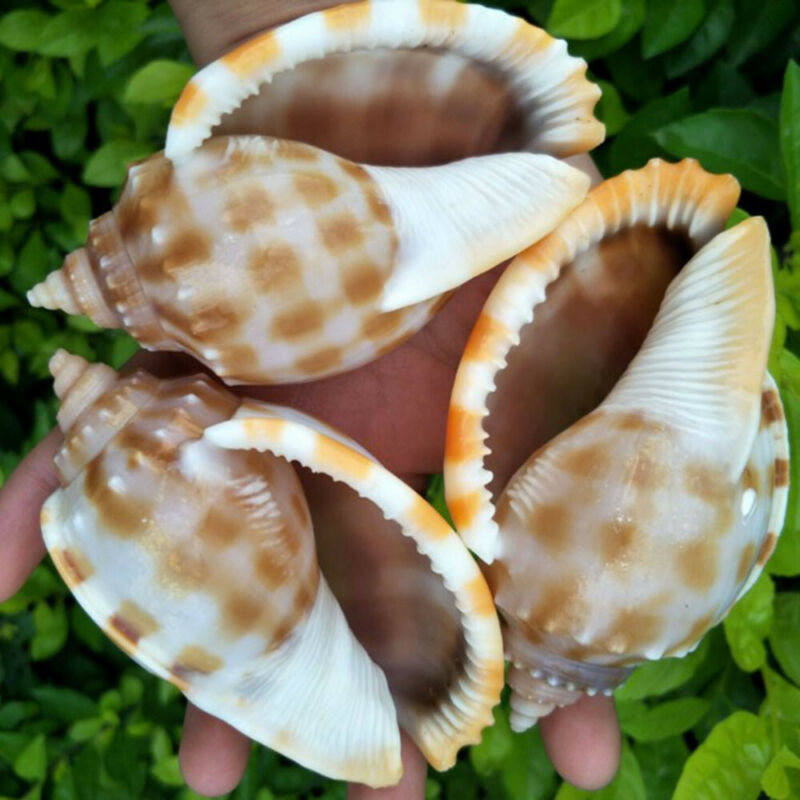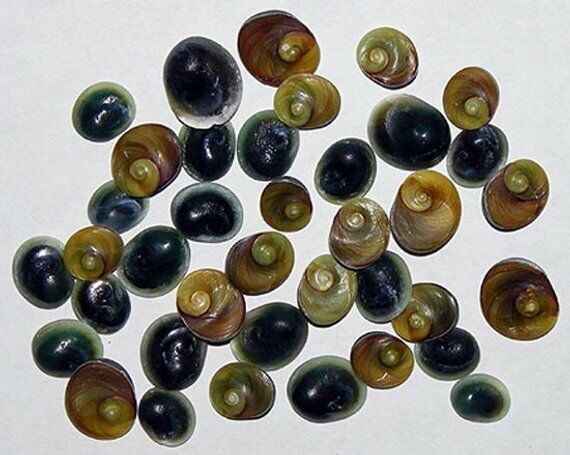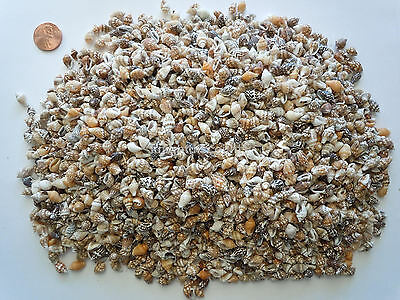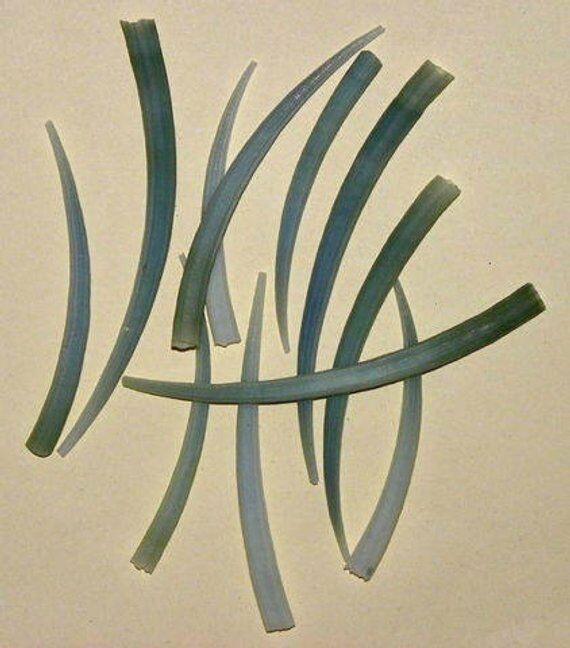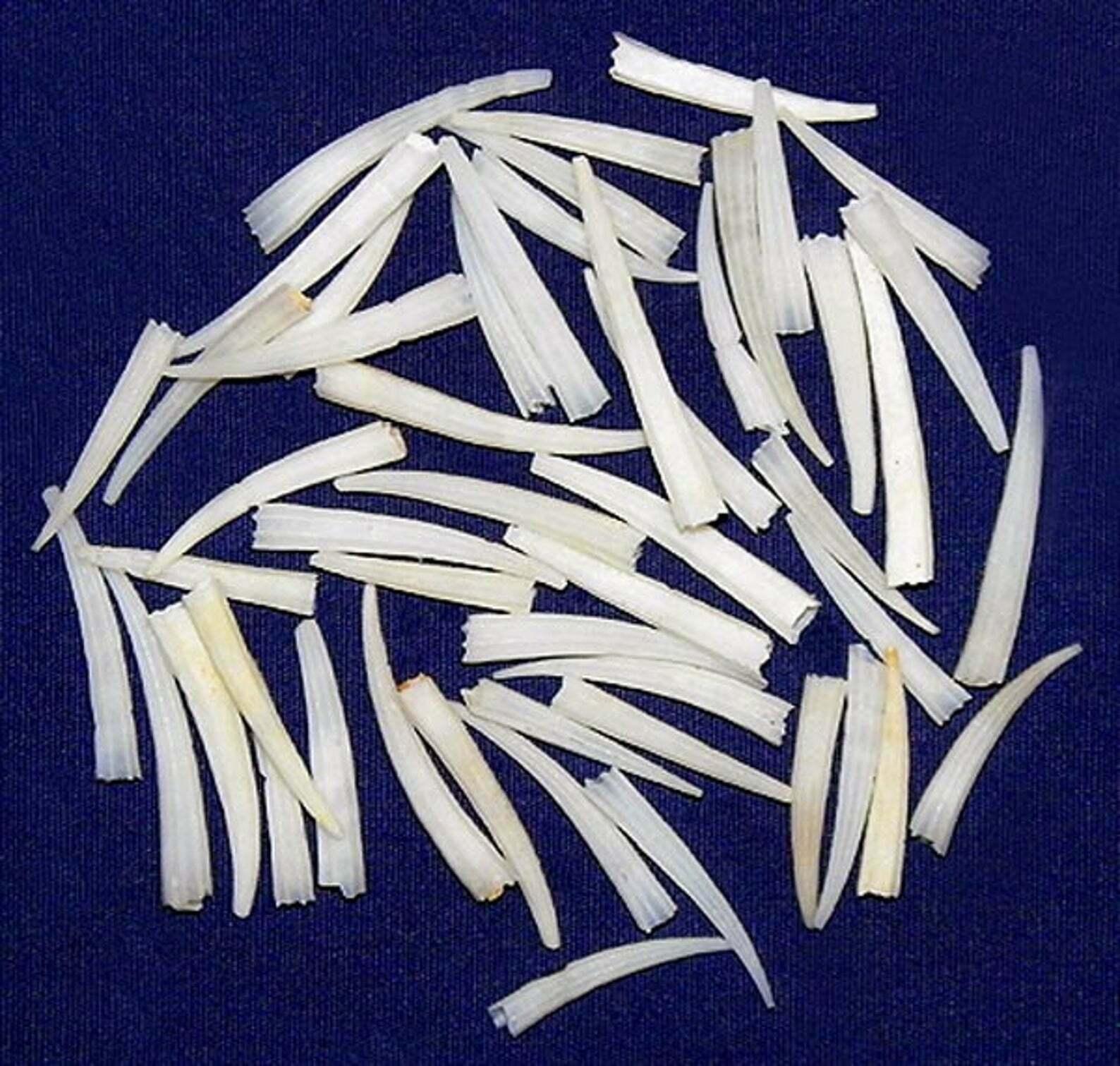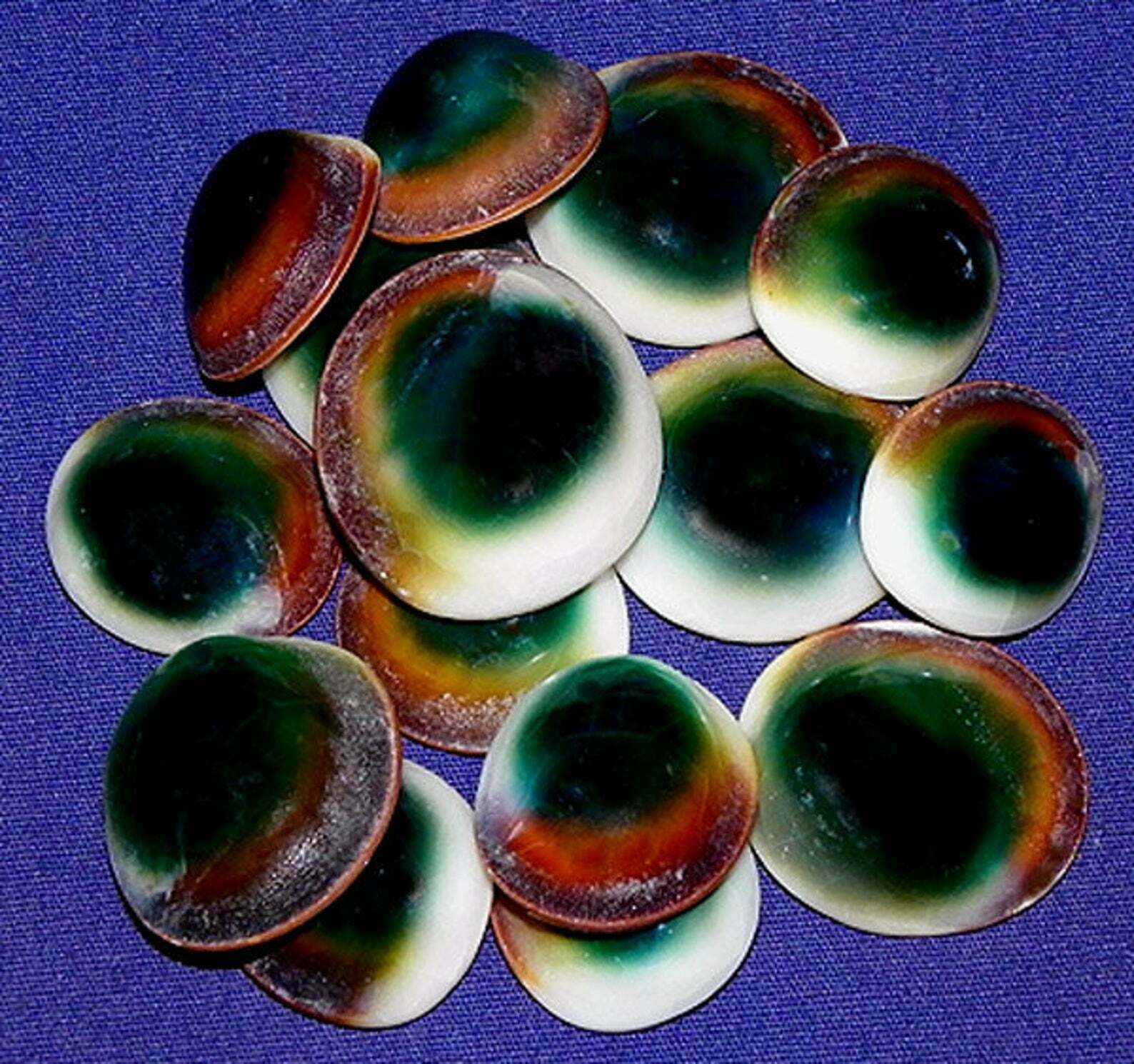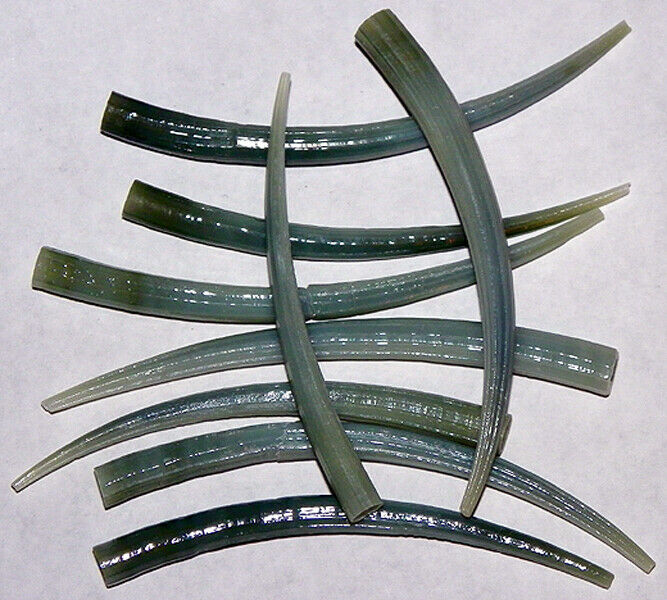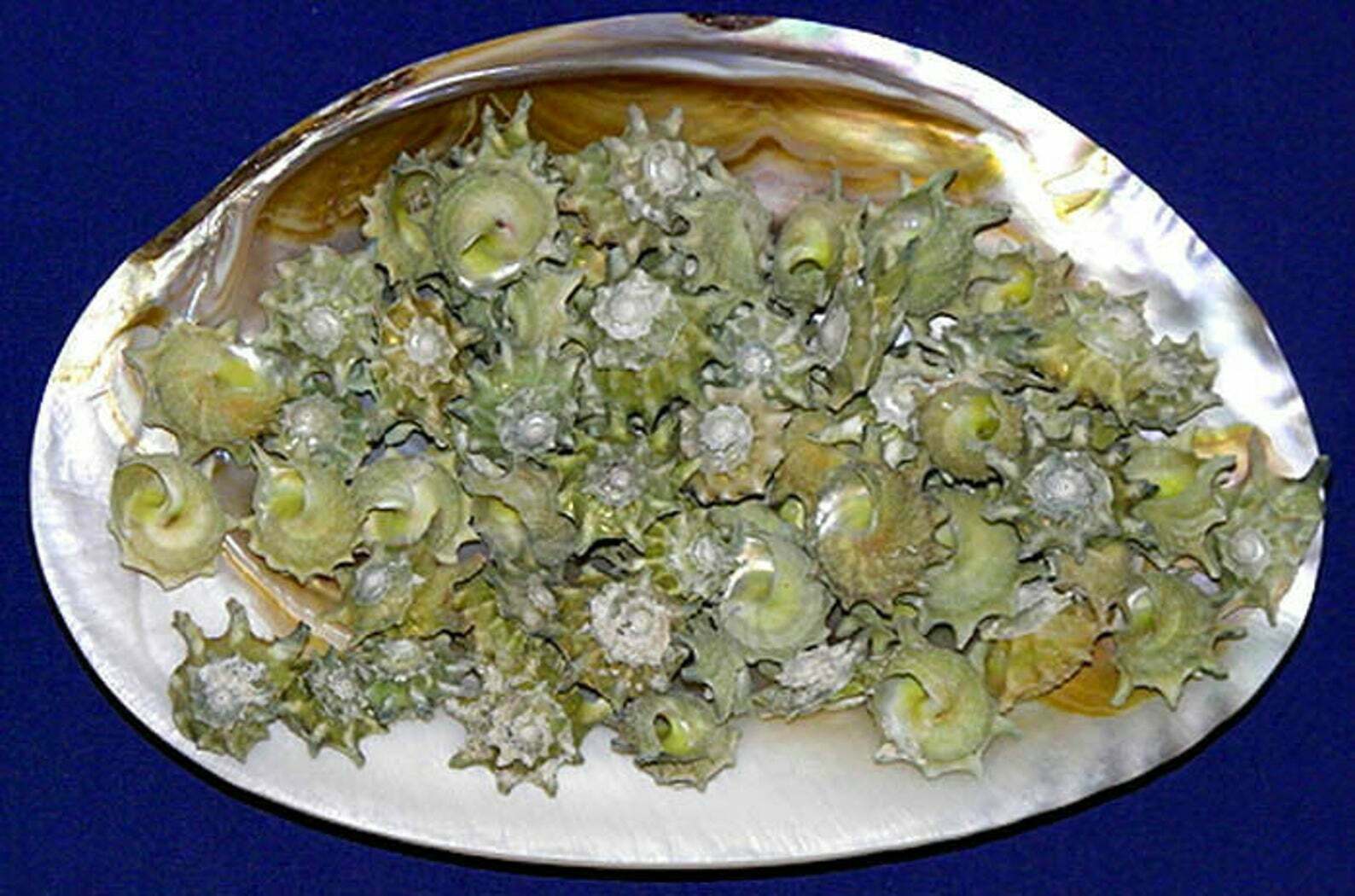-40%
Rare Big Size Dakshinavarti Shankh / Right handed Conch
$ 264
- Description
- Size Guide
Description
Item Name :Dakshinavarti Shankha / Dakshinavarti Shankh / Right Handed Conch
Description :
Shankha
(
Sanskrit
:
शंख
s
aṇkha
) is a
conch
shell
which is of
ritual
and religious importance in both
Hinduism
and
Buddhism
. The shankha is the
shell
of a
species
of large predatory
sea snail
,
Turbinella pyrum
, which lives in the
Indian Ocean
.
The shankha is a sacred
emblem
of the Hindu preserver god
Vishnu
. It is still used as a
trumpet
in Hindu ritual, and in the past was used as a war trumpet. The shankha is praised in Hindu scriptures as a giver of fame,
longevity
and
prosperity
, the cleanser of
sin
and the abode of
Lakshmi
, who is the goddess of
wealth
and consort of
Vishnu
.
The shankha is displayed in
Hindu art
in association with Vishnu. As a symbol of water, it is associated with female fertility and serpents. The shankha is one of the eight
Buddhist
auspicious symbols, the
Ashtamangala
, and in Buddhism it represents the pervasive sound of the
Buddhadharma
. In
Tibetan Buddhism
, it is known as "
dung kar
".
A powder made from the shell material is used in Indian
Ayurvedic
medicine, primarily as a cure for stomach ailments and for increasing beauty and strength.
In the
Western world
, the shell of this species is known as the "divine conch" or the "sacred chank". It may also be simply called a "chank" or
conch
. The more common form of this shell is known as "left-turning" in a religious context, although scientists would call it "dextral".
In its earliest references, shankha is mentioned as a
trumpet
and in this form it became an emblem of Vishnu. Simultaneously, it was used as a votive offering and as a charm to keep away the dangers of the sea. It was the earliest known sound-producing agency as manifestation of sound, and the other elements came later, hence it is regarded as the original of the elements. It is identified with the elements themselves .
As a trumpet or wind instrument, a hole is drilled near the tip of the
apex
of the shankha. When air is blown through this hole, it travels through the whorls of the shankha, producing a loud, sharp, shrill sound. This sound is the reason the shankha was used as a war trumpet, to summon helpers and friends. Shanka continued to be used in battles for a long time. The sound it produced was called
S
hankanad.
Nowadays, the shankha is blown at the time of worship in Hindu temples and homes, especially in the ritual of the Hindu
aarti
, when light is offered to the deities. The shankha is also used to bathe images of deities, especially Vishnu, and for ritual purification.
Significance :
Shankha's significance is traced to the
nomadic
times of the
animists
who used the sound emanating from this unique shell to drive away evil demons of whom they were scared. The same is still believed in Hinduism. Over the centuries, the shankha was adopted as one of the divine symbols of Hinduism.
Lord Vishnu holding the conch represents him as the god of sound.
Brahma Vaivarta Purana
declares that shankha is the residence of both Lakshmi and Vishnu, bathing by the waters led through a shankha is considered as like bathing with all holy waters at once.
Sankha Sadma Purana
declares that bathing an image of Vishnu with cow milk is as virtuous as performing a million
yajnas
(fire sacrifices), and bathing Vishnu with
Ganges
river water frees one from the cycle of births. It further says
"while the mere sight of the conch (shankha) dispels all sins as the Sun dispels the fog, why talk of its worship"
Padma Purana
asserts the same effect of bathing Vishnu by Ganges water and milk and further adds doing so avoids evil, pouring water from a shankha on one's own head before a Vishnu image is equivalent to bathing in the pious Ganges river.
Even in
Buddhism
, the conch shell has been incorporated as one of the eight auspicious symbols, also called
Ashtamangala
. The right-turning white conch shell represents the elegant, deep, melodious, interpenetrating and pervasive sound of the
Buddhadharma
,
which awakens disciples from the deep slumber of ignorance and urges them to accomplish their own welfare and the welfare of others.
Dakshinavarti Shankh
: is considered very auspicious and kept at pooja only and not blown. It is the favourite of Goddess Lakshmi and it is said that one who keeps this Shankha in pooja will always have excellent prosperity.
Dakshinawarti Shankha is rare lucky charm. This Dakshinavarti Shankha is a Sea-shell which opens towards the right hand, and is extremely rare with lot of spiritual significance, because Sea-shells that open towards the left hand are very common. Dakshinawarti Shankha / Dakshinamukhi Shankha is a rare one and is also called Vishnu Shankha. This Dakshinavarti Shankha saves a person from all troubles and problems, removes hurdles and fulfills all wishes and offers money and materials .
The sea shell which open towards left hand are commonly available but rare the seashells which open towards Right Side. Shells are obtained from the water-animals especially form snails, which live in the seas. Dakshina means the south side or when holding the Shankha , Right Side. Therefore it known as Dakshinavarti Shankha. Dakshinavarti Shankha is available in white color and with brown lines on it. Dakshinavarti Shankha is the symbol of Maa Lakshmi. Goddess Lakshmi photo always depicts Dakshinavarti Shank in her hands. Dakshinavarti Shankha shall be kept in Puja Ghar or Locker during any lucky occasion or festival, Dakshinavarti Shankha brings good luck and wealth to the individual and his family. In the Puranas, the gods and goddesses are depicted as holding a shell, whenever they are happy or setting out on war. Whenever the shell is blown it is said to purify the surroundings form all evil effects. Even the scientists have agreed other fact that the blowing of a conch increases the positive qualities in the atmosphere such as courage, faith, determination, dedication, optimism, etc. It is always recommended that each house shall have Dakshinavarti Shankha for wealth, prosperity and Good Luck. It is believed that who keeps this Shell in their locker , they would never face any dearth of money in there life. Dakshinavarti Shankha shall be kept on white cloth in Puja Ghar/ worship place or Wrapped in white or red cloth, if need to be kept in locker. One shall light incense in front of Dakshinavarti Shankha and offer white rice and milk.
Ordinarily the conches are Vamvarti i.e their bulge opening towards left side (facing North). Some shells are Dakshinvarti, their bulge opening towards the right surface i.e facing south and even their spiral lines run towards the right . South is the direction of Kuber, the God of wealth, Tantrik Shastra has given great importance or such types of shells. Dakshinvarti shells are very rare and are found only in a hardly any places . Their sizes be different, starting form the size of a wheat gram or as large as coconut. Mostly these shells available only at Kenya Kumari. A completely white colored-one is extremely rarely found. Dakshina varti Shankha not only bring wealth but also purifies the environment. All the negatives energies are drain out of the place.
Benefits of Dakshinvarti Shankha
** Prosperity to the house or office
** No shortage of groceries, money or clothes.
** Brings peace to the premises.
** If kept in the bedroom, it brings a good relationship among the couple.
** If kept during a spiritual get together, it brings awareness by evoking Deity Saraswati.
** Enlightens the students with skill and sharpens their memory.
** Fill it with Ganges water and sprinkle it on a person or in a premises. Malefic planetery effects and black magic evils disappear.
** Removes ill-effects of Brahmhatya, Gau-hatya and Bal-hatya (Dosha due to killing of a priest, cow or kids in the previous births).
Sthapna of Dakshinavarti Shankha :
1. Choose any Thursday.
2. Take a right-handed Conch (Dakshinavarti Shankha).
3. Put the conch in a plate.
4. Wash the conch in Panchamrit (with unboiled milk, tulsi leaves ,honey, curd and ghee).
5. Keep the conch on a red cloth.
6. Offer sandal paste mixed with saffron, camphor, flowers, rice, scented incense sticks and oil lamp.
7 . Count the beads of a rosary while reciting the mantra
"Om Hreem Shreem Kleem Shreedhar Karasthaya Payonidhi Jataya Shree Dakshinavarti Shankhaya, Hreem Shreem Kleem Shree Karaaya Poojyaaya Namah".
8 . Feed and lend some money (Dakshina) to a Brahmin.
9. Worship the conch , like an idol of a divinity. Worship them respecting them like Goddess Lakshmi and Lord Vishnu, with utmost veneration.
Note:-
** The conch must be hole-free and its mouth should never be opened to blow it. It should be allowed to close as it is.
** The shell's open portion must be on top. Its back should be on the seat.
** The top portion should be facing the worshipper and the rear portion the wall.
Mantra for Dakshinavarti Shankh :
" Om Mahadevyai Cha Vidmahe Vishnupatnyaicha Dhmahi Tanno Lakshm Prachodayaat !
Om Panchajanyaya Vidmahe Padma Garbhaya Dhimahi Tanno Shankha Prachodayaat !! "
Size : 12
inches (approx) , as shown in last listed picture .
